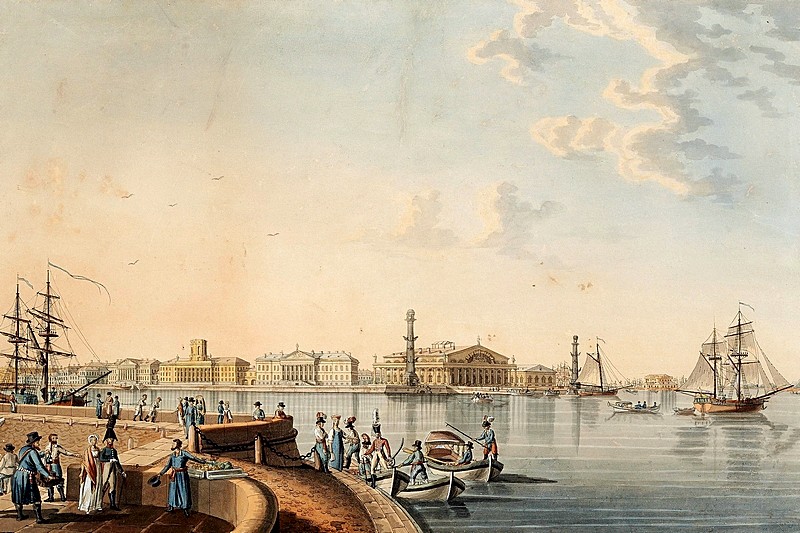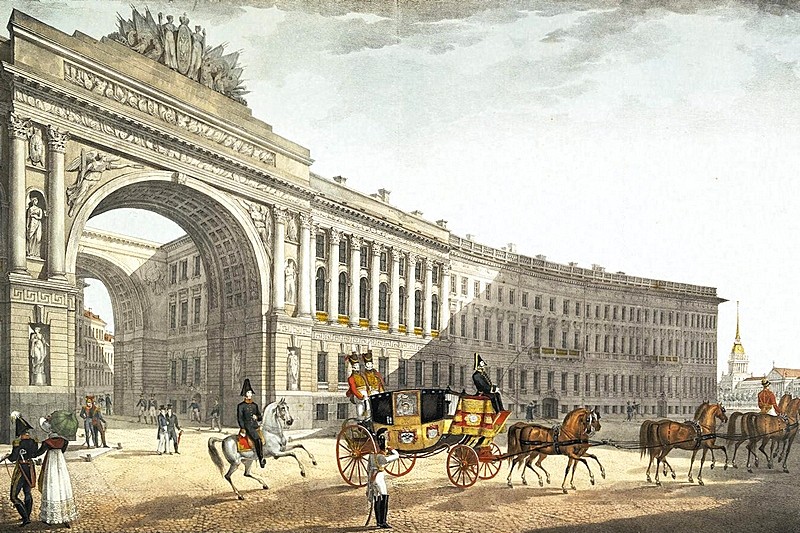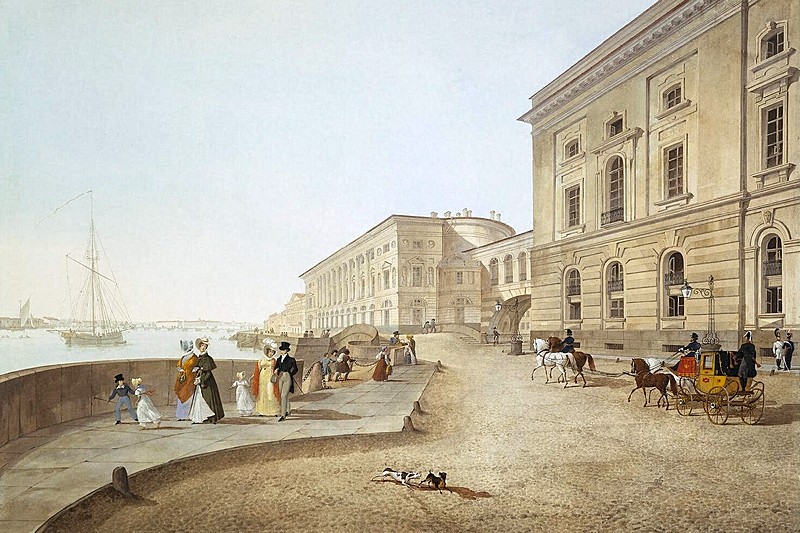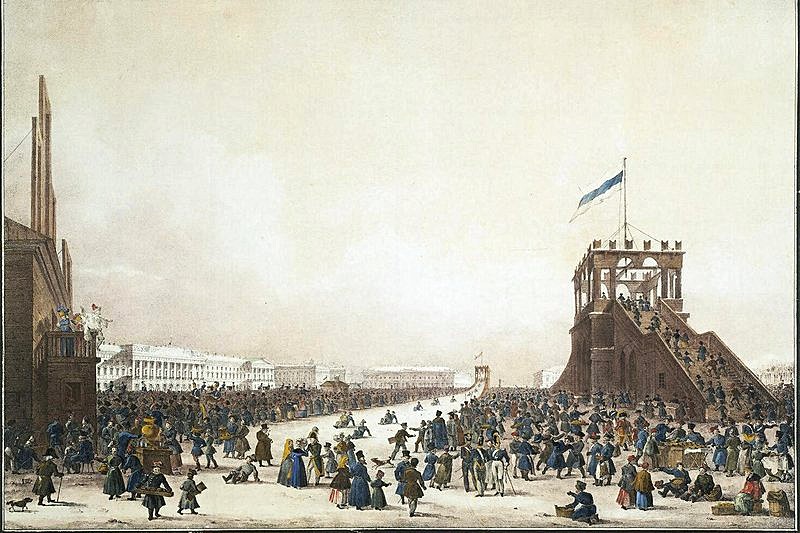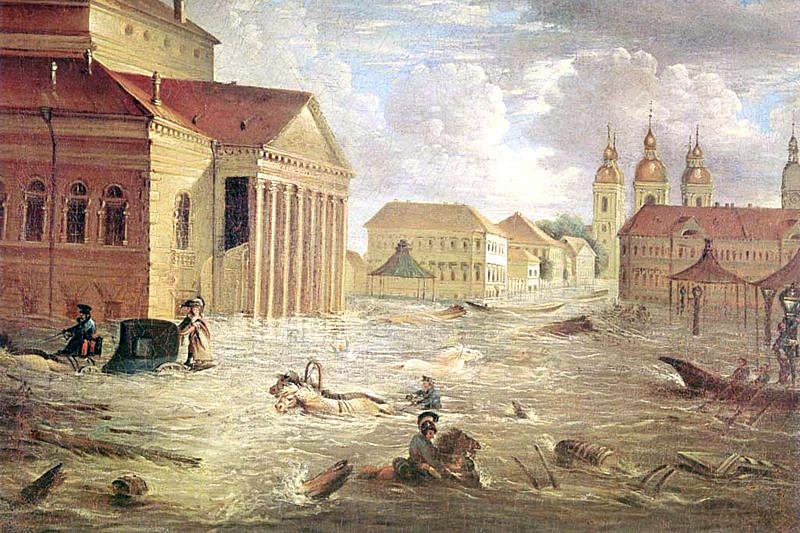St. Petersburg in the era of Alexander I (1801-1825)
St. Petersburg in the era of Alexander I was marked above all by grand construction projects, not just of individual buildings but of whole streets and squares, without which it is impossible to imagine the city now. As Alexander's reign saw the defeat of Napoleon, during which Russia moved to centre stage in European power struggles and Alexander himself became the continent's most powerful monarch, it is fitting that his era should coincide with the pinnacle of High Classicism in architecture, the so-called "Empire" style. St. Petersburg had its own master of the style, the Italian-born Carlo Rossi, whose splendid career gained momentum through the latter years of Alexander's reign.
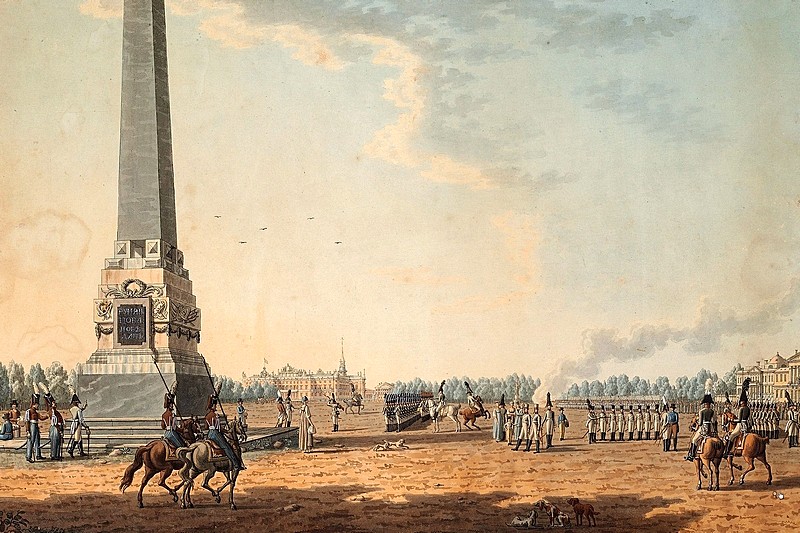
The earliest of these grand projects was the ensemble on the Spit of Vasilievsky Island. With the Stock Exchange at its center, it was built according to the plans of the architect Thomas de Thomon. Then, the Admiralty was rebuilt in the style of High Classicism, its new majestic appearance now suitable not only to the pragmatic tasks of a shipyard, but also as an iconic image of the capital city of the vast Russian Empire. Grand edifices like Kazan Cathedral on Nevsky Prospekt and the Mining Institute on Vasilevky Island were constructed. Construction began on the General Staff building which would complete the Palace Square ensemble. The Yelagin Palace on Yelagin Island was built by Rossi for Alexander's mother, Empress Maria Fyodorovna and the Mikhailovsky Palace (today the headquarters of the State Russian Museum) for his brother, Grand Duke Mikhail Pavlovich. At the time of Alexander's death, Rossi was completing work on the surroundings of the Mikhailovsky Palace, which became Ploshchad Iskusstv (Arts Square), the first of several grand formal squares by the architect in the city centre.
On the initiative of Alexander I, construction began on St. Isaac's Cathedral: it would take forty years to complete this magnificent structure and the work spanned the reigns of three emperors.
There is no separate monument – statue or bust – to Alexander I in St. Petersburg. However, his memory is honored in the Alexander Column that stands in the center of Palace Square, across from the Winter Palace. This column, which celebrates Russia's victory in the Napoleonic Wars, is named in honor of Alexander and, according to legend, the angel holding the cross atop the column bears the facial features of Emperor Alexander.

